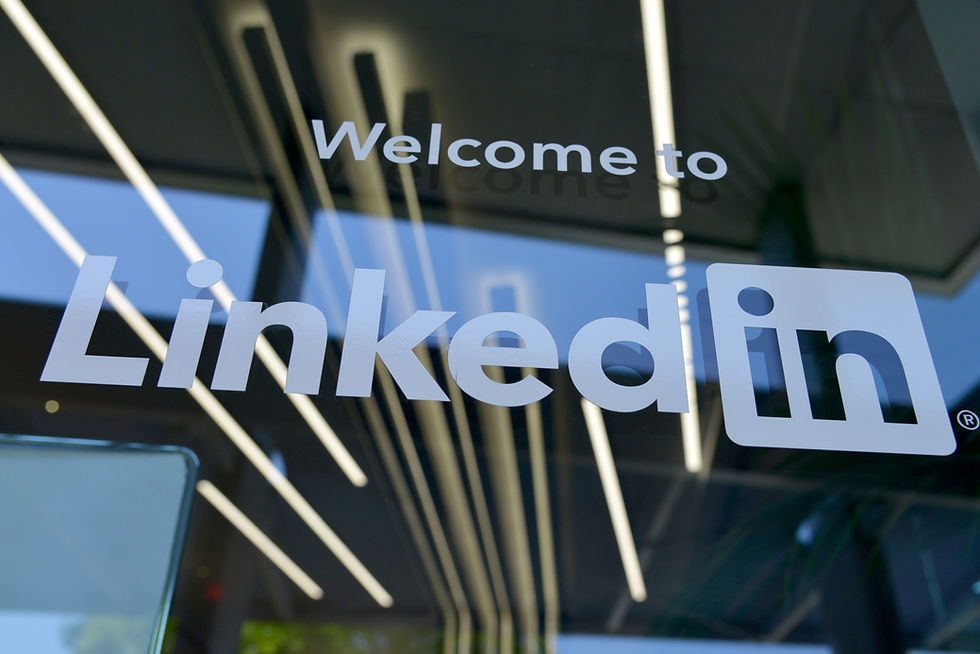Why I Came Back to LinkedIn — And Why You Should Too
- Sophia Brading

- May 1
- 3 min read

Not too long ago, I was spending up to 7 hours a day on LinkedIn.
Glamorous? Not exactly. But it was part of the job.
In my corporate role, LinkedIn was my daily workspace — building relationships, researching clients, pitching, networking.
I knew the platform inside out, and it delivered.
Big wins. Big results.
But when I left that world behind and stepped into entrepreneurship, I decided to focus on Facebook and Instagram...
They felt faster. Louder. Much more exciting.
And don’t get me wrong — they do have their place.
But recently, when I looked at where real, consistent business was happening — the high-value clients, the referrals, the retained contracts, the B2B partnerships — one thing became crystal clear:
It’s all happening on LinkedIn.
So I've come back and I'm going to up the ante over the coming months.
LinkedIn in 2025 is not what it used to be.
It’s better.It’s smarter.
And it’s built for people like us — small business owners.
If you’re not using LinkedIn yet — here’s why it’s time.

1. People are in work mode
LinkedIn users aren’t here to kill time — they’re here to learn, grow, solve, and connect.
2. Organic reach still exists
One good post can put your business in front of hundreds (or thousands) of the right people.
3. Silent readers are watching
Even if no one likes or comments — they’re reading. And when they’re ready to buy, they remember.
4. You don’t need 10k followers
You need a high-trust network of buyers, peers, and connectors.
5. It builds credibility fast
A sharp profile + valuable content = instant expert positioning.
But What About Other Platforms?
Let’s look at how LinkedIn compares to the rest of the social media world in 2025 — especially when it comes to small businesses and serious growth.
Social Media Platforms in the UK: 2025 Snapshot
Users: Approximately 45 million members in the UK, accounting for 64.9% of the population.
Demographics: Most popular among professionals aged 25–34.
Engagement: 25% of users interact with brand content daily.
Business Use: Ideal for B2B marketing, networking, and establishing professional credibility.
Users: Around 38.3 million users in the UK, representing 55.2% of the population.
Demographics: Strong presence among users aged 25–34.
Engagement: Average user time is 39 minutes daily.
Business Use: Effective for community building and targeted advertising.
Users: Approximately 33.4 million users in the UK, equating to 48.2% of the population.
Demographics: Highly popular among 18–34-year-olds.
Engagement: 50% of users interact with brands daily.
Business Use: Excellent for visual storytelling, brand awareness, and product promotion.
TikTok
Users: Over 200,000 active businesses on TikTok Shop in the UK.
Engagement: Users spend a collective 4.8 billion minutes on TikTok each day.
Business Use: Growing fast for product discovery and live selling.
X (formerly Twitter)
Users: Approximately 22.9 million users in the UK, about 33% of the population.
Engagement: Median engagement rate down to 0.015% in 2025.
Business Use: Best for news and updates; not ideal for small business visibility.
If you aren't on LinkedIn here’s how to set up your LinkedIn profile the right way.
Beginner’s Guide: Setting Up Your LinkedIn Profile
1. Create a LinkedIn Account
Go to linkedin.com and click Join now
Enter your email and create a password
Follow the prompts to add your name, location, and job title
Verify your email to activate
2. Upload a Professional Profile Photo
Click your profile picture placeholder > Add photo
Use a clear, high-res headshot with good lighting
Avoid group shots, filters, or logos
3. Add a Custom Background Image
Click the pencil icon on your banner > upload an image
Showcase your brand, offer, or style
Ideal size: 1584 x 396px
4. Write a Compelling Headline
Show who you help and how you help them
Example:
Architect for Luxury Homes & Heritage Properties | Bespoke Design with Character
5. Write a Persuasive About Section
Speak to your ideal client’s problem, how you solve it, and what to do next
Use 3–5 short paragraphs or bullet points
6. Detail Your Work Experience
Include job title, company name, dates, and key bullet points of achievements
7. Add Your Education
School, degree, field, and dates
8. List Relevant Skills
Add 5–10 skills your audience is searching for
9. Request Recommendations
Ask happy clients or past colleagues to share a quick review
10. Customize Your LinkedIn URL
Create a clean URL like linkedin.com/in/yourname
11. Enable Creator Mode
Unlock access to featured sections, hashtags, and more visibility tools
12. Add Featured Content
Pin your top-performing post, lead magnet, service link, or testimonial carousel




Comments